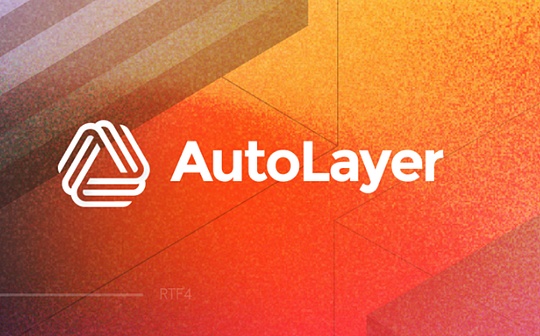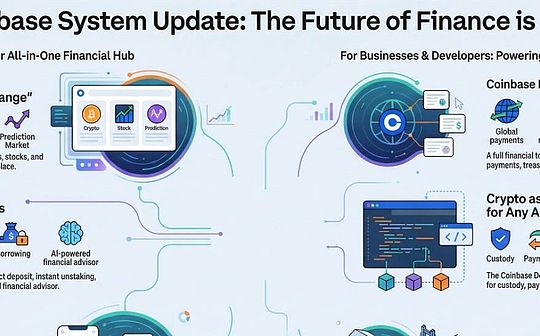
Author: DEWHALES Research Source: Dewhales Translation: Shan Oba, Bitchain Vision Realm
1. Introduction
At present, there are many re -pledge protocols and buildings on it, from Eigenlayer, Babylon, and similar solutions to Symbiotic, Puffer, Swell, Kelp, and additional components/extensions such as Mellow, Gearbox, Lyra and Anzen.With the development of LRTFI, the number of niche protocols is also increasing, which makes it increasingly difficult for users to control the differences between various protocols and re -pledge mechanisms.The re -pledge pattern has developed into a multi -layer structure, which is very different from the early state of LSDFI.
AUTOLAYER is the largest pre -pledge market, integrated with companies such as Eigenlayer, Symbiotic, Renzo Protocol.It offers more than 20 different assets, including Bitcoin and Ethereum re -pledge options.With its advanced risk return analysis, point management and structured products, Autolayer users can use multiple LRT/LST options to maximize and complex their revenue strategies.
2. Autolayer evaluation
In essence, Autolayer is the continuation of Tortle Ninja -a DEFI visual programming language allows anyone to easily create and understand DEFI products.Tortle Ninja provides users with a high -level experience of algorithm Defi transactions, enabling them to perform spot and derivative strategies, measure real -time data to measure their performance, and quickly adapt to changing market conditions.
In Autolayer, Tortle Ninja’s mechanism is suitable for products and strategies related to re -pledged.As a re -pledge protocol polymer, Autolayer provides several key features:
-
Reapped liquidity and one -click liquidity allocation——This allows users to pledge any token in a single transaction.Users only need to click to get ETH pledge rewards, EIGENLAYER points, LRT points, re -pledge rewards, and Autolayer points, starting from any assets.
-
Analysis engine——The calculation of all the incentives and key performance indicators generated by the user (KPI).
-
Risk structure– In addition to rewards, Autolayer also provides a comprehensive LRT risk assessment.We are currently focusing on the risk of decoupling. Real -time calculation of AAVE, Gearbox, Morpho, and PRISMA, the number of LRTs used as a mortgage in decentralized applications, and compare it with DEX liquidity and contracts to liquidate.These data enable us to analyze the possibility of liquidation -level couplets and provide users with important information about these risks they face.
-
AVS evaluation– Praising the assets is placed on AVS.For each AVS on Autolayer, the risk assessment will be created according to the two indicators: TVL and community TVL of professional operators.
-
Re -assign strategy——LST and LRT can be used for DEFI, and publishers can reward people using them.Autolayer users can easily execute these strategies without clicking it without permission.Users can also evaluate their positions by integrating their receipts (LP positions, NFT, etc.) into the interface, and exchanged them to any assets they want.
At present, Autolayer runs on multiple chains, including Ethereum, Arbitrum and BNB Chain.In the future, you plan to add more chains (please refer to the “Partner and Integration” part of more details).
It is worth noting that Autolayer did not abandon Tortle Ninja’s tradition of DEFI, but provided users with strategies related to DEFI.These strategies are supported by Balanscer and Camelot pool.
>
In addition, Autolayer also introduced consistent development strategies to welcome V1.5 and V2.In V1.5, the plan includes an extended re -pledge protocol based on Eigenlayer and launched native structured products (the first of which is integrated with BNB Chain).Version 2 will bring wider updates, including virtual operators and insurance libraries, AVS storage managers, AVS and LRT scoring mechanisms, compound interest and liquidity, LRT re -mortgage, reducing testing and bounty.
As part of further development, and in order to improve user experience and income, Autolayer plans to launch a new feature called Stripped liquid restaked tokens (SLRT).In order to achieve this goal, the liquidity pool containing all packaging points will be created in Balancer, and the packaging points in the pool will be traded on the open market.The bonding points indicate that it will be stored in the insurance library, which in turn will allow cast SLRT.These SLRT users can receive specific quantitative points and are expressed on the chain of points.Each time it is collected, a SLRT is allowed and allowed to destroy them. The ratio between points and SLRT is 1: 1.In addition, Autolayer plans to create a liquid Balancer pool for packaging points to ensure its liquidity.
3. Autolayer architecture and component
As a multifunctional protocol, Autolayer consists of several components:
-
Dashboard, That is, the front -end interface, including three products: Click Liquid Staking/RestAKing, Staking/RestAKing Strategies and Defi Strategies (as described above).
>
-
ComposerIt is components that enable Autolayer to create protocol abstract.It is a advanced tool for building a DEFI strategy and a workflow, which provides graphic interfaces that interact with multiple DEFI protocols.The platform supports complex operations involving various financial instruments, including but not limited to DEX swaps, LSTFI, LRTFI, LP, leverage positions, income farms, and a series of structured products and derivatives.
The integrated logic layer is an important aspect of the editor.This layer provides programmable automation functions, allowing users to define and implement conditions logic and rules -based strategies.
>
-
Analysis engineManage more than 800 different assets from various protocols, collect data from RPC, Chainlink Oracles and blockchain.It provides a fast and reliable real -time asset valuation system that covers the tokens, LST, RST, LP positions, NFT, insurance library share, leverage position and arbitrary combination.This micro -service -based engine optimizes RPC, Oracle, and blockchain calls to provide scalable, accurate and fast market data.
-
Execute engineHelp the implementation of various chain strategies.It can start, stop, merge, and split transactions to simplify the integration of composite and non -composite projects in Autolayer.Whenever operation is needed, a large quantum process is activated.The flexibility of executing engine in management transactions is a prominent function.It can not only be combined with transactions, but also intelligently trigger and stop operation.This is particularly useful for integrating non -composite services and controlling large orders during the implementation of large orders.For example, it can create insurance libraries on agricultural platforms or accumulate non -liquidity tokens and automatically exchange them to liquidity versions to automatically complete.
-
Autoyer consultationIn order to obtain the offer from all decentralized exchanges (DEX), bridges and LRTFI operators, thereby optimizing the operation of slide points and GAS costs.
4. Tokens economics and indicators
AutoLayer tokens plays a vital role in the ecosystem of the protocol, and its value increases with the growth of the user base.There is no transaction fee at present, but the platform plans to charge 0.05% to 0.20% of all transactions through Autolayer.
If the user chooses to lock the tokens to obtain the income, it will have a lock -up period of 30 days, and the reward will accumulate within 12 months. During this period, the user can withdraw its tokens at any time.
Total supply: 30 million pieces,Initial circulation supply: 2,386,880 pieces
-
20% -community: 6 years of belonging.The airdrop will be allocated according to the community milestone, which will be triggered by the goals achieved by the community.The milestone of the community is related to the maturity of Autolayer. It will initially define the Autolayer team and then transition to community governance.
-
25% -ecosystem: Lay3r’s part will be assigned to AUTOLAYER strategic participants in a wider ecosystem, including community organizations, developer community growth plans, strategic participants, etc.
-
18.2% -seed wheels: Less than 7% of them will be released on TGE (tokens).
-
5.38% -Public rounds: This will be performed on multiple startup boards, such as Poolz, Ape Terminal, and Magicsquare Launchpads.
-
10% -liquidity provides: Ensure the liquidity of each decentralized exchange, and motivate the price discovery and liquidity in the DEFI ecosystem.
-
7.38% -Finance: It is used to support plans, developers subsidy funds, and funding for operation costs.
-
4% -strategic consultant
-
10% -Autolayer team
>
5. Team
The team behind AutoLayer is composed of 14 people, divided into three departments: 6 developers, 2 strategies and operators, as well as 6 marketing and designers.AutoLayer is a department of Glue Digital. Glue Digital is a software development consulting company focusing on encryption, fintech and security.
-
Javier B. Thomas, CEO:Javier studied physics and information technology at the University of Madrid (UCM).His career involves key positions of Havas Media, MPG and AEGIS.In 2011, he founded GLUE DIGITAL, a company that started in scratch. He has developed to have 35 employees with annual recurring income (ARR) of 2.5 million euros, with an annual growth rate of 50% to 90%.In the Glue Digital, Javier played an important role in coordinating teams and software that is used for encryption, security and financial technology, and affected millions of users.His customers include large organizations such as Inditex (ZARA), Securitas, eBay/PayPal, AXA, as well as various European institutions.
-
Anxo solo, chief technology officer:Anxo is a computer engineer who graduated from the University of Lacoune (UDC).Since 2014, he has been the chief technician of Glue Digital to help the company expand from 5 employees to 35 employees.During college, Anxo developed an optimized PHP version of Arthur Scherbius Enigma Machine for his graduation thesis, although it was rejected by the professor.Later, he re -created it with a simpler idea.Since then, Anxo has been working with Javier.He is the founder of Universal Scripts (a popular React framework) and OxoAuth, as well as many encryption and security projects. These projects have been adopted by companies such as Carrefour, Securitas and PayPal.
6. Cooperation and integration
As a polymer, Autolayer will naturally integrate with various projects involved in its strategy.This includes tokens from SWLL (SWBTC), Renzo (Pzeth), Kelp (RSETH), Ether.fi (Weeth), Puffer (PUFETH), BEDROCK (UNIETH), and Inception (INETH).
In the upcoming V2 version, Autolayer will support a variety of re -pledge agreements, which is currently in cooperation with Symbiotic, Karak, Kernel and Nektar.In addition, Autolayer has established partnerships with AVS projects such as Lagrange, Automata, Witness Chain, OpenLayer, Arpa Network, and Brevis Chain.
-
Paraswap: Autolayer integrates the exchange mechanism of the Paraswap V5, which enhances liquidity routes and allows users to get the deepest and effective liquidity in the market.
-
Balancer: The integration of BAALANCER enables Autolayer to provide its first batch of DEFI strategies to provide users with more ways to generate benefits.Balancer provides a wide range of LRT pools, allowing users to provide liquidity with one click.The income is generated by exchanges and obtained an additional score -based incentive from Autolayer.
-
Everclear: Everclear coordinate the global cross -chain liquidity settlement, solve the fragmentation problem of modular blockchain, and pay special attention to re -pledge.Users can transactions or cast tokens such as BNB Chain, Arbitrum, Mode, Polygon, GNOSIS, OP, Linea, Metis, and Base on BNB Chain, Arbitrum, Arbitrum, Mode, Polygon, GNOSIS, OP, Linea, Metis, and Base.
7. Supportr
AUTOLAYER supporters promise to invest 2.5 million US dollars, including Dewhales Capital, Morningstar Ventures, Kucoin Labs, Staked VC, Poolz Ventures, Spark Capital, etc.
>
8. Conclusion
Last year, we had high hopes for the growth of the LSDFI field.However, the expansion of LRTFI is much faster, and it is pledged around.Obviously, the development of anything related to liquidity often leads to the emergence of auxiliary protocols, such as Autolayer, which focuses on maximizing income and enhanced user experience (like Napier).The most surprising thing is that Autolayer is not just a polymer at LRT point; it is a complex, multi -component protocol, which is developed from another complex DEFI product.The evolution and development of AutoLayer have not stopped -the team is constantly adding some new things and integration.







